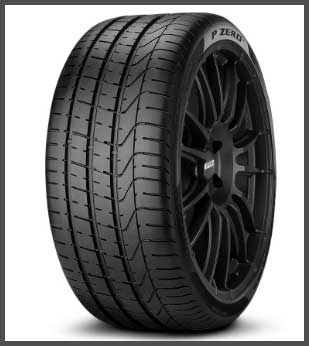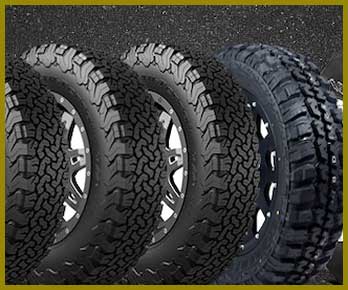Welcome to the world of tires, where numbers like 101 and 105 carry significant meaning. Whether you are a car enthusiast or just want to understand your vehicle better, comprehending the implications of these numbers is essential.
So, let’s dive into the great debate between the 101 and 105 tire.
| Features | 101 Tire | 105 Tire |
| Load Index | 101 | 105 |
| Load Capacity | 825 kg (1819 lbs) | 925 kg (2039 lbs) |
| Vehicle Suitability | Mid-sized vehicles, SUVs, small trucks | Larger vehicles, full-sized trucks, large SUVs, RVs |
| Balance | Good balance of comfort and load capacity for mid-sized vehicles | Can handle more weight, suitable for heavier vehicles or heavy loads |
| Speed Rating (assuming Y) | Can safely handle speeds up to 186 mph | Can safely handle speeds up to 186 mph |
Breaking Down the Basics
First things first: when we say “101” or “105” in terms of tires, we’re referring to the tire load index. In simpler terms, this is the maximum weight that each tire can safely carry when inflated properly.
Understanding this figure is crucial when it comes to ensuring the safety and performance of your vehicle.
Understanding The 101 Tire

The tire load index 101 translates to a maximum load capacity of 825 kg or 1819 lbs.
So, when you see “101” on a tire, it means the tire can handle this much weight when fully inflated.
Many mid-sized vehicles, SUVs, and smaller trucks use these tires due to their optimal balance between load capacity and comfort.
Pros of 101 Tires
- Versatility: 101 tires are common and versatile, ideal for a range of vehicles, from sedans to small trucks.
- Good Load Capacity: With a load capacity of 825 kg, these tires can handle the weight of most average vehicles with ease.
Cons of 101 Tires
- Limited for Heavier Vehicles: While 101 tires can handle most mid-sized vehicles, they might not be suitable for larger, heavier vehicles such as full-sized trucks or RVs.
The 105 Tire Unveiled
Moving up the scale, we have the 105 tire. A tire with a load index of 105 can handle a maximum weight of 925 kg or 2039 lbs. This higher load capacity makes them perfect for larger vehicles or those carrying heavier loads.

Pros of 105 Tires
- Higher Load Capacity: With a load capacity of 925 kg, 105 tires can support heavier vehicles and loads.
- Ideal for Larger Vehicles: Full-sized trucks, SUVs, and RVs can benefit from 105 tires due to their higher load capacity.
Cons of 105 Tires
- Potential Overkill for Smaller Vehicles: For compact cars or smaller sedans, 105 tires might be overkill. They could lead to unnecessary costs without providing much additional benefit.
Key Differences Between 101 and 105 Tires
While both the 101 and 105 tires have specific purposes, they differ in a few key areas.
- Load Capacity
The fundamental difference between a 101 and a 105 tire lies in their load index, which directly impacts their load capacity. A 101 tire has a load index of 101, which corresponds to a maximum load of 825 kg or 1819 lbs.
On the other hand, a 105 tire, with a load index of 105, can handle a larger load up to 925 kg or 2039 lbs. This increased load capacity makes 105 tires suitable for heavier vehicles or those required to carry heavy loads.
- Vehicle Suitability
Another crucial difference is the type of vehicle these tires are suitable for. 101 tires, with their lower load capacity, are a good fit for medium-sized vehicles, including SUVs and small trucks.
They can efficiently bear the weight of these vehicles without compromising on comfort and safety.
However, 105 tires, with their higher load capacity, are more suitable for larger, heavier vehicles like full-sized trucks, large SUVs, or RVs.
If you’re driving a vehicle that falls into these categories or if you regularly carry heavy loads, 105 tires would be a more suitable choice.
- Comfort and Performance
The choice between a 101 and a 105 tire might also depend on the comfort and performance you’re looking for. While both types of tires are designed to provide a safe and comfortable ride, their performance may vary based on the vehicle’s weight and the type of loads they carry.
101 tires are often considered a good balance between comfort and load capacity for mid-size vehicles. They provide sufficient load-bearing capacity while ensuring a smooth ride.
However, if you own a heavier vehicle or need to carry heavier loads, 105 tires are a better choice. Their higher load index allows them to handle more weight without compromising performance.
Also Read: Basic Comparison of Pirelli SC1 and SC2 Tires.
Frequently Asked Questions (FAQ)
The number 105 on a tire refers to its load index, indicating that it can carry a maximum weight of 925 kg or 2039 lbs when properly inflated.
A tire load index of 101 means that the tire can carry a maximum load of 825 kg or 1819 lbs when properly inflated.
When you see “101Y” on a tire, “101” refers to the load index, and the “Y” indicates a speed rating, meaning the tire can safely handle speeds up to 186 mph.
A 105Y tire can carry a load of 925 kg or 2039 lbs (indicated by the “105” load index) and can maintain speeds up to 186 mph safely (as indicated by the “Y” speed rating).
Final Thoughts
The world of 101 and 105 tires is intriguing, but it is also filled with subtleties. Understanding these can significantly improve your vehicle’s performance and safety.
Remember to always consider your vehicle’s requirements before choosing between a 101 and a 105 tire.




